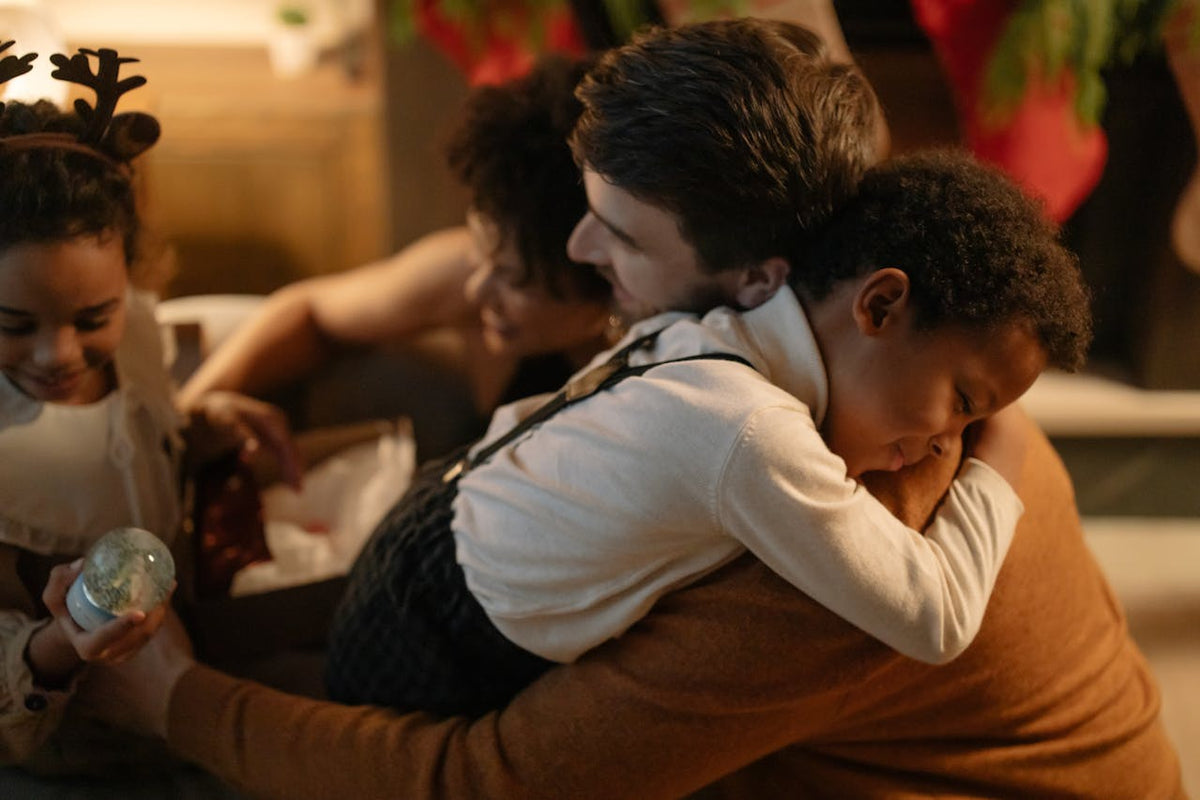Holistic mental health places equal value on mind, body, lifestyle, and environment - and early support makes all the difference. Too often, people wait until they feel completely overwhelmed before seeking help, yet proactive care can prevent issues from escalating. A holistic approach not only addresses symptoms but also uncovers triggers, builds resilience, and nurtures wellbeing through nutrition, movement, relationships, and purpose. Recognising mental health as a spectrum, rather than a simple “well or unwell” state, allows space for timely interventions that restore balance. By embracing early holistic support, therapy becomes a natural routine, reducing stigma and encouraging others to care for their mental wellbeing. This gentle, integrated method reminds us that sustainable healing is about treating the whole person – and starting sooner rather than later.
Share your articles with us and get published! Reach out at hello@friendlyturtle.com.
Mindful Gift Giving: Psychology Meets Sustainability!

Many people misunderstand what makes a gift truly meaningful. While grand gestures often steal the spotlight, research shows that recipients tend to prefer practical, thoughtful gifts they can actually use. This insight challenges the common belief that the best gifts are always the most surprising or extravagant.
The psychology behind gift giving runs deeper than most realize. Across cultures and centuries, people have used gifts as a powerful way to express connection, care, and thoughtfulness. A gift becomes a reflection of the giver, shaping how the recipient feels and even how they view the relationship. Studies suggest that the most appreciated gifts are not necessarily rare or unique, but rather those that show understanding, offer something new, or provide a little luxury the recipient might not buy for themselves. In this article, we’ll explore the emotional roots of gift giving and uncover three key principles for choosing gifts that resonate. You’ll also find practical tips for personalizing presents and avoiding common pitfalls.
Why We Give Gifts: The Emotional Core
The science behind gift giving shows something remarkable about human nature. Our brains light up in a unique way when we give presents to others, and this pattern is different from what happens when we receive gifts. This "warm glow" of generosity triggers our reward pathways and releases oxytocin - often called the "cuddle hormone" which signals trust, safety, and connection.
Altruism and the joy of giving
Research proves that spending money on others makes us happier than buying things for ourselves. A fascinating experiment gave participants $100 and asked half to spend it on themselves while others spent it on other people. People who bought gifts for others felt substantially happier afterward. Brain imaging studies reveal that both giving and receiving gifts light up reward and pleasure centers - but giving does more by stimulating subgenual areas linked to social bonding.
Our brains feel this pleasure throughout the whole gift-giving journey - while shopping, wrapping, and presenting the gift. The positive effects last longer too. People who give to others experience more sustained happiness compared to those who just receive something. Psychologists call this "beliefs-based altruism" - we don't just give gifts because we want people to have things. We give because we want them to feel loved, experience joy, or avoid disappointment.
The role of reciprocity in relationships
Anthropologists see reciprocity - the social mechanism of giving and receiving - as fundamental to all human connections. Marcel Mauss's influential gift theory describes this as a "triple obligation" to give, receive, and reciprocate. This exchange builds meaningful bonds between people. These reciprocal interactions are the foundations of societies. Being left out of such exchanges can mean social exclusion.
Timing plays a crucial role in reciprocal relationships. Unlike business transactions, gift exchanges shouldn't be returned right away - but waiting too long can damage the relationship. This delicate balance of giving and receiving helps us build trust, commitment, and care that strengthen our connections with others.
The 3 Pillars of Meaningful Gift Giving
A thoughtful gift perfectly balances sentiment with usefulness. Research shows that while gift-givers focus on the unwrapping moment, recipients value items they'll use over time. You can nail this balance by understanding three key aspects of gift-giving.

1. Make them feel seen
The best gifts don't need a big price tag - they need to show real understanding. A gift that makes someone feel truly understood creates an emotional connection that surpasses the gift itself. Your present can say "I see you" in a world where people often feel overlooked.
The magic happens when you mirror their personality back to them. You might track down those Pizza Hut Flintstones Kids glasses they loved as a child or pick out a book from your collection that matches their interests. These thoughtful choices build stronger connections than any generic gift could.
2. Offer something they wouldn't buy for themselves
Most people hesitate to treat themselves to practical luxuries, even though they often appreciate receiving them. Items like quality kitchen gadgets, cozy electric blankets, or premium self-care products are the kinds of gifts that feel thoughtful and useful. One easy way to offer that kind of experience is through a curated selection from MyBaskets, a service that specializes in gift baskets Toronto delivery. Their beautifully arranged bundles make it simple to send something that feels both personal and indulgent.
Research shows that recipients tend to value gifts they can use regularly rather than flashy items meant only for the moment. Even gifts that reflect different personal values can be well received when chosen with care and understanding.
3. Introduce them to something new
You can expand someone's world through experiences or items they wouldn't find on their own. Consider booking them a latte art class, candle-making workshop, or moss wall art session.
Cornell University researchers found that experiences bring longer-lasting satisfaction than material goods. The excitement of looking forward to an experience adds extra happiness. Yes, it is true that experience gifts like cooking classes, food tours, or helicopter rides create lasting memories that physical items can't match.
How to Personalize a Gift Without Overthinking It
Gift-giving becomes much easier when you have a thoughtful system in place. Rather than scrambling at the last minute to find the perfect present, you can build a habit of noticing what really matters to the people around you. The strategies below will help you choose meaningful gifts with confidence and ease throughout the year.
- Write a mini-bio of the recipient: Start by writing a short, three-sentence description of the person, even if you know them well. Focus on what excites them, what they enjoy, and what they value most. For example, "My dad is obsessed with sports, thinks most kitchen gadgets are pretentious, and has been a lawyer his whole life."
- Keep a running list of gift ideas: Great gift-givers pay attention all year long. Keep a note on your phone or create individual lists for different people. When someone mentions something they want or when you see an item that reminds you of them, jot it down immediately.
- Notice what they talk about or admire: Pay close attention to the things people mention in conversation or the items they linger over while shopping. These casual observations often reveal true interests or needs that they may never express outright. Listening closely helps you find gifts that feel thoughtful and intentional.
-
Use shared memories as inspiration: Personalized gifts rooted in shared experiences often have the most emotional impact. Consider creating a photo book, choosing a keepsake tied to a meaningful date, or selecting a gift that refers to an inside joke or special moment.

Common Gifting Mistakes and How to Avoid Them
We've all experienced the awkward moment of giving or receiving a gift that doesn't quite land. In fact, 62% of Americans admit they've pretended to like a gift, and over half have displayed unwanted items at home just to avoid hurting the giver's feelings.
Gift-giving missteps often happen because the focus shifts to the excitement of the unwrapping moment rather than the long-term usefulness of the item. People aim to spark joy or surprise, but recipients usually appreciate gifts they can actually use and enjoy repeatedly. For example, a chocolate fondue fountain might seem fun at first but often ends up collecting dust.
Gifts that create extra work or unexpected costs can also backfire. Items like unassembled furniture, tickets that require travel, or products that need additional accessories can feel more like a burden than a treat.
To avoid these issues, keep in mind the most frequent gift-giving mistakes:
- Choosing gifts based on your taste instead of the recipient’s
- Picking items that require extra time, effort, or money to enjoy
- Panic-buying at the last minute without thinking it through
- Sticking to overly themed gift ideas that become repetitive
- Overspending beyond what was agreed or expected
- Regifting without care or thought
- Relying on generic or impersonal items
Conclusion
Meaningful gift giving is not about the price tag or the surprise factor. It is about paying attention, understanding someone’s values, and choosing something that reflects care, not just effort. When you give a gift that feels personal, useful, or inspiring, you offer more than just an object - you create a moment of connection that lingers long after the wrapping paper is gone.
By embracing the emotional roots of generosity, avoiding common mistakes, and applying simple personalization strategies, anyone can become a more thoughtful and confident gift giver. The real reward lies not just in what you give, but in how your gift makes someone feel. And that feeling, more than anything else, is what makes a gift truly memorable.
0 comments
Let customers speak for us
Blog posts
Covering grey hair doesn’t have to mean harsh chemicals or salon dependency. With natural methods, you can soften silver strands while protecting both your scalp and the planet. From simple coffee rinses and potato peel tonics to nutrient-rich herbal blends like henna, amla, or indigo, eco-friendly solutions offer gentle, lasting coverage. Plant-based dyes and DIY remedies not only respect hair health but also reduce environmental impact, keeping routines safe and sustainable. For quick fixes, root concealer sprays or chamomile rinses provide subtle blending, while long-term herbal packs nourish and strengthen strands. By avoiding ammonia, PPD, and parabens, you protect yourself and embrace a greener lifestyle. With the right choices, natural grey coverage becomes more than cosmetic - it’s part of a conscious, sustainable hair care journey.
Antarctica, Earth’s most remote wilderness, offers travellers more than icebergs and penguins - it delivers powerful lessons in resilience, patience, and perspective. Facing freezing winds and unpredictable conditions builds mental toughness, while constant changes teach flexibility and the ability to embrace uncertainty. The slow rhythm of the continent encourages mindfulness, helping visitors appreciate stillness and detail in daily life. Standing amidst endless ice shifts priorities, reminding us what truly matters beyond deadlines and bills. Overcoming the physical and emotional challenges of this extreme destination boosts confidence that lasts long after the journey ends. An Antarctic adventure is not only an unforgettable experience but also a natural training ground for sustainable living and inner growth.



